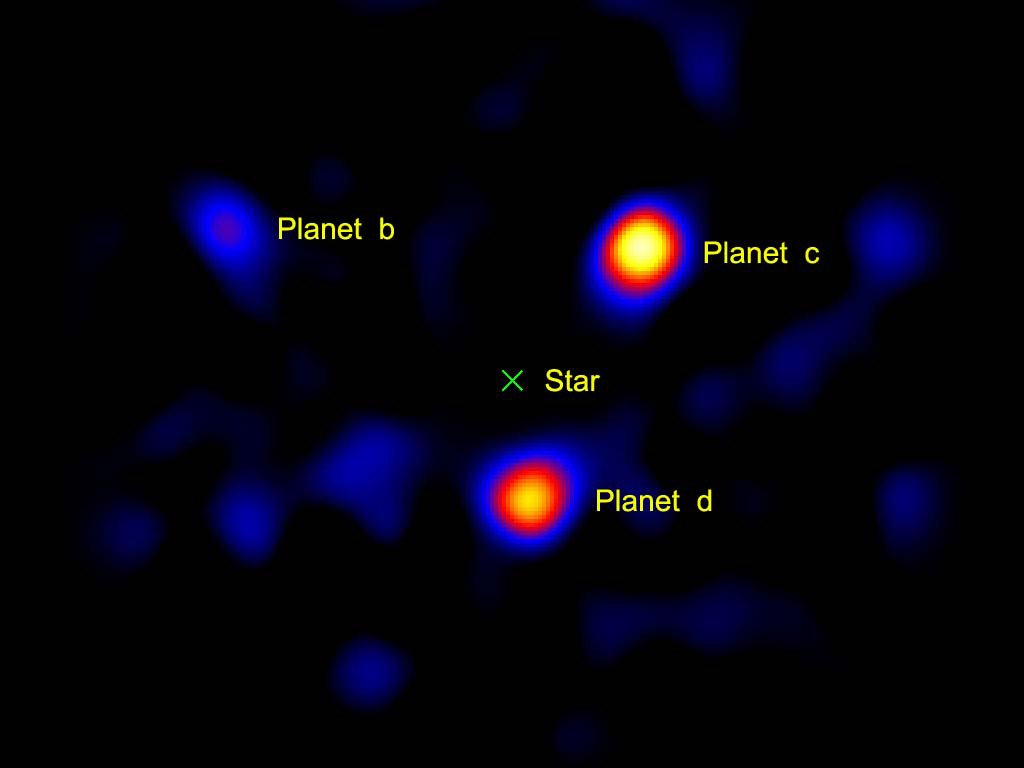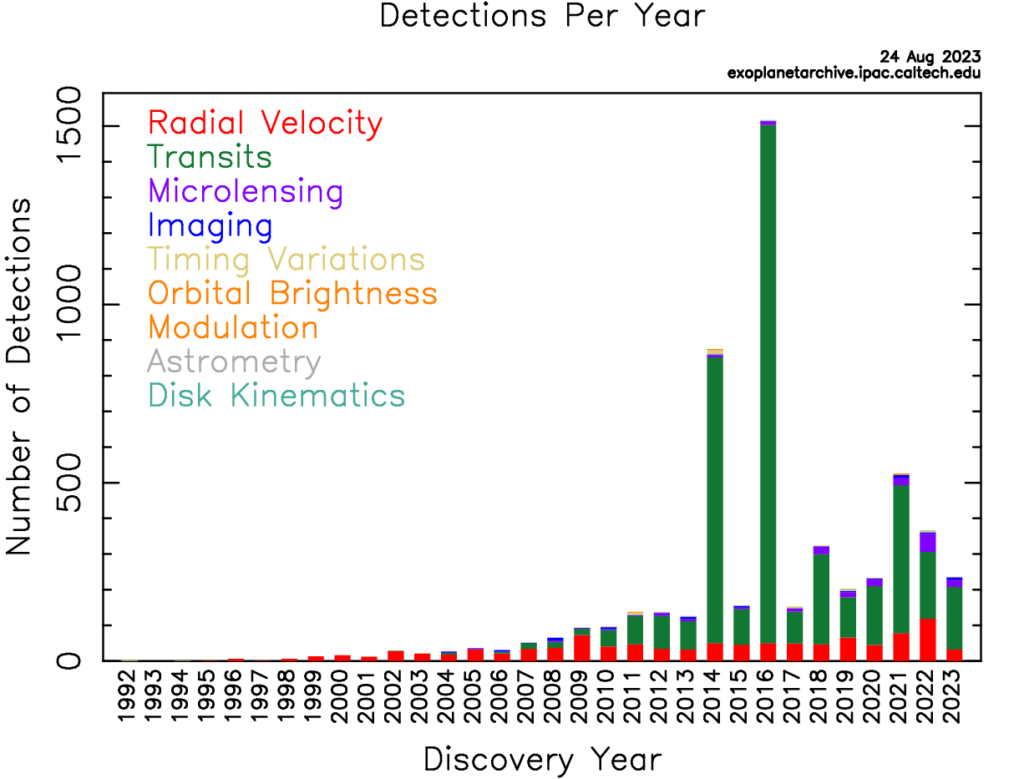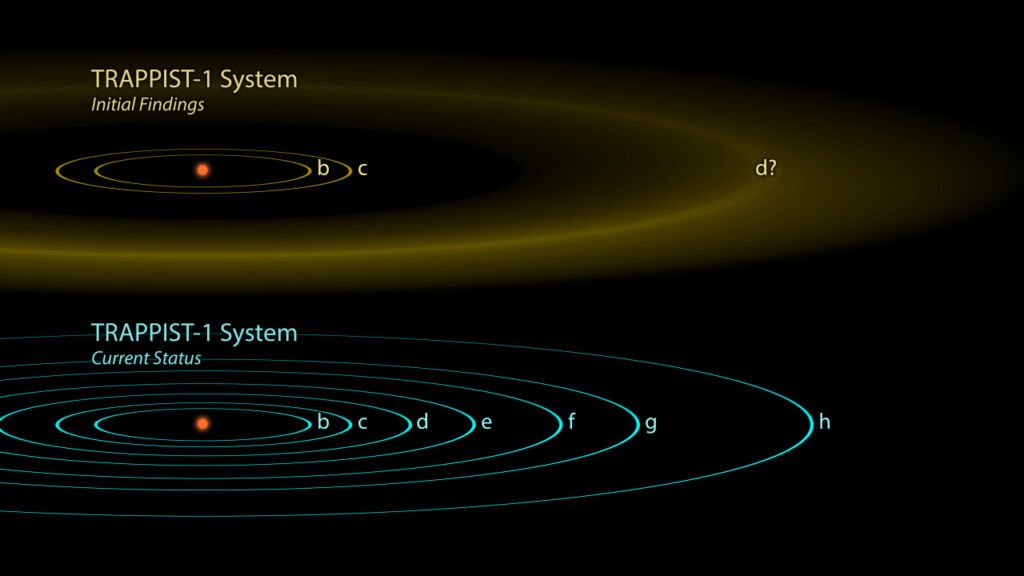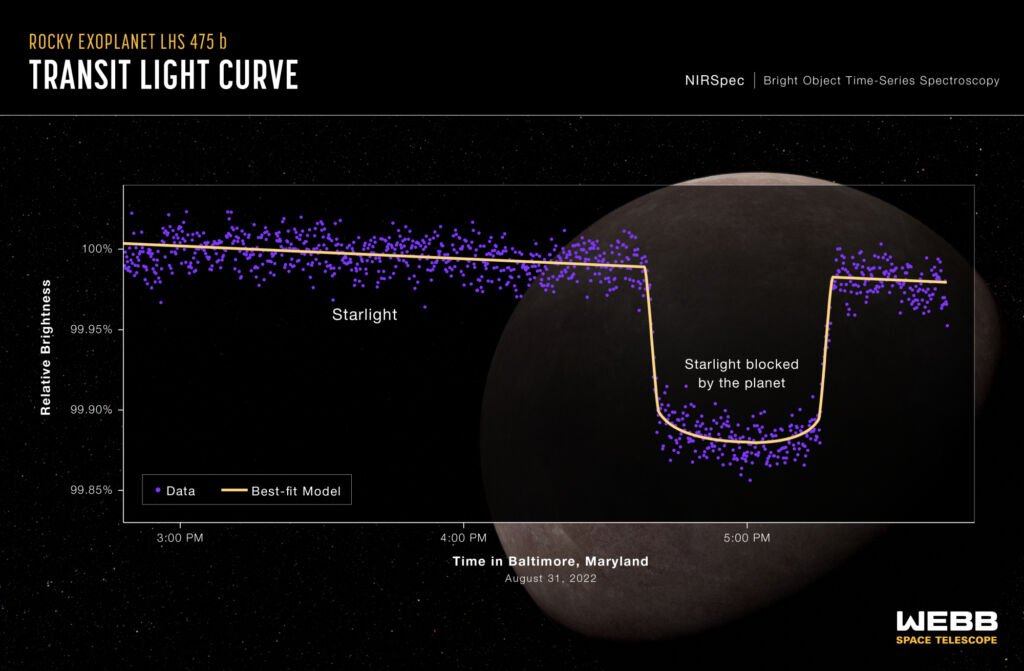Introduction to Exoplanet Exploration:
Exoplanets, planets orbiting stars beyond our solar system, have captivated the imaginations of scientists and astronomy enthusiasts alike. These distant worlds, varying in size, composition, and environment, offer a tantalizing glimpse into the diversity of the universe.
The study of exoplanets is not just a pursuit of knowledge; it’s a journey into the unknown, pushing the boundaries of our understanding of planetary systems. Since the first confirmed detection in 1992, the field of exoplanet research has exploded, with thousands of these alien worlds now known to us.
Each discovery brings with it new questions: Could any of these planets host life? How do these worlds compare to our Earth? What can they teach us about the formation of planetary systems? This exploration is not just about finding new planets; it’s about finding our place in the cosmos.
Through the lenses of advanced telescopes and the ingenuity of space missions, we’ve begun to uncover the secrets of these distant planets, making what once seemed like science fiction a reality. In this article, we delve into the fascinating world of exoplanets, exploring their discovery, characteristics, and the profound impact they’ve had on our understanding of the universe.
What are Exoplanets?
Exoplanets, a term derived from “extrasolar planets,” are celestial bodies that orbit a star other than our Sun. Essentially, they are planets that belong to star systems beyond our solar system.

So an exoplanet refers to any planet located outside our solar system. While the majority of these planets orbit around other stars, there are also unique types known as rogue planets. These free-floating exoplanets do not orbit a star; instead, they travel through the galaxy, orbiting the galactic center and unbound to any stellar host.
Significance of the discoveries?
The discovery of these distant worlds has revolutionized our understanding of the universe, challenging long-standing astronomical theories and inspiring new ones.
The significance of exoplanets lies in their diversity and what they reveal about planetary formation and the potential for life beyond Earth. They come in various sizes and compositions, from gas giants many times the size of Jupiter to rocky terrestrial planets similar to Earth. Some orbit in the habitable zone of their star, where conditions might be right for liquid water—a crucial ingredient for life as we know it. Others exhibit extreme environments, like scorching hot surfaces or deep frozen states, providing insights into planetary dynamics under conditions vastly different from those on Earth.
Each exoplanet discovery broadens our understanding of how planetary systems develop and evolve. They offer a broader context to assess our solar system and the rarity or commonality of planets like Earth. The study of exoplanets is not just a quest to find new worlds; it’s a pursuit to understand the possibilities of the universe and our place within it.
Exoplanet Types:
Exoplanets have primarily been found within a limited area of the Milky Way galaxy. Thanks to the observations from NASA’s Kepler Space Telescope, we now understand that planets outnumber stars in our galaxy.
These exoplanets exhibit a vast range of sizes, from small, Earth-like diameters to massive, Jupiter-sized proportions. By analyzing their sizes and masses, we get insights into their compositions, which can vary significantly. While some exoplanets have compositions akin to rocky planets like Earth and Venus, others are rich in gases, resembling the likes of Jupiter and Saturn in our solar system. These planets are formed from elements common in the universe, similar to those found in our solar system’s planets. However, the proportions and combinations of these elements can be quite different.
We have discovered exoplanets with unique and extreme characteristics: some are “water worlds” or ice-dominated planets, while others have surfaces primarily composed of iron or carbon. Among these fascinating discoveries are planets with surfaces of flowing lava, “puffy” planets with extremely low densities comparable to Styrofoam, and even remnants of planetary cores that continue to orbit their stars.
Description of Exoplanet types:
Exoplanets come in a variety of types, each with distinct characteristics based on their size, composition, and distance from their parent star. Here’s a brief overview of the main types:

- Terrestrial Planets: Similar to Earth, these planets are rocky and usually smaller in size. They often have solid surfaces with potential for liquid water, making them prime targets in the search for extraterrestrial life.
- Gas Giants: Much larger than terrestrial planets, gas giants like Jupiter and Saturn in our solar system, are composed primarily of hydrogen and helium. They lack a solid surface and often have extensive systems of moons and rings.
- Ice Giants: Planets such as Uranus and Neptune are classified as ice giants. They are characterized by their significant amounts of ‘ices’— substances like water, ammonia, and methane—in a gaseous form.
- Super-Earths: Larger than Earth but smaller than Neptune, these planets can be either rocky or gaseous. Their size implies a greater gravitational pull, which could affect the planet’s atmosphere and potential habitability.
- Mini-Neptunes: These are smaller versions of Neptune, with thick atmospheres and possibly large oceans or ice layers. They typically have a heavier atmosphere than Earth-like planets but are not as dense as the larger gas giants.
- Hot Jupiters: These are gas giants that orbit very close to their star, resulting in extremely high surface temperatures. Their close proximity to their star often results in a year that is just a few Earth days long.
- Rogue Planets: These are free-floating planets that do not orbit a star. They drift through the galaxy independently and are challenging to detect due to their lack of a star’s illuminating light.
Methods of Exoplanets discovery:
The discovery of exoplanets, planets outside our solar system, has been made possible through several ingenious methods. Each technique leverages different aspects of planetary and stellar physics to detect these distant worlds:
- Transit Method: This is one of the most successful methods for finding exoplanets. It involves monitoring the brightness of a star over time. When a planet passes in front of its host star (a transit), it causes a temporary dip in the star’s brightness. By observing these dips, which occur at regular intervals if caused by an orbiting planet, astronomers can infer the presence, size, and orbit of the exoplanet.
- Radial Velocity Method: Also known as the Doppler spectroscopy method, this technique measures changes in the star’s spectrum. As a planet orbits a star, its gravitational pull causes the star to wobble slightly. This wobble shifts the star’s spectrum towards the red end (redshift) or the blue end (blueshift) of the light spectrum. By measuring these shifts, astronomers can determine the presence of a planet, its mass, and its orbit.
- Direct Imaging: This method involves taking pictures of the exoplanets directly, which is challenging due to the bright glare of the host stars. Advanced technologies, such as coronagraphs and starshades, are used to block the starlight, allowing the fainter planets to be observed. Direct imaging is particularly useful for detecting large, young planets that are far from their host stars.
- Gravitational Microlensing: This method relies on the effect of Einstein’s theory of general relativity. When a massive object, like a star with an exoplanet, passes in front of a more distant star, the gravity of the closer star acts as a lens, magnifying the light from the distant star. If the foreground star has a planet, it can cause a detectable anomaly in the magnification. Gravitational microlensing is especially good for detecting planets around stars that are too distant for other methods.
- Astrometry Method: This technique involves measuring the precise movements of a star in the sky. As a planet orbits a star, it causes the star to move in a small orbit too. By tracking these tiny movements over time, astronomers can infer the presence of a planet and obtain information about its mass and orbit.
Some Important Exoplanet Discoveries:
- 1992: The first confirmed exoplanets, PSR B1257+12 A and B, were discovered orbiting a pulsar.
- 1995: 51 Pegasi b, the first exoplanet discovered orbiting a Sun-like star.
- 1999: The first multiple-planetary system, Upsilon Andromedae was discovered. It contains three Jupiter-like planets.
- 2001: HD 209458 b (Osiris), detected using the transit method.
- 2003: Using information from the Hubble Space Telescopre, PSR B1620-26b, the oldest extrasolar planet was confirmed. Its estimated age is 12.7 billion years.
- 2005: TrES-1, another early discovery using the transit method.
- 2008: GJ 1214 b, a notable super-Earth.
- 2014: Kepler-186f, the first Earth-size planet in the habitable zone of its star.
- 2023: The James Webb Space Telescope reported its first exoplanet discovery as LSH 475 b
Unique Features and Other Names of Some Important Exoplanets:
- Kepler-22b: Lies in the habitable zone of its star, potential for liquid water.
- Kepler-10c: Also known as ‘Mega Earth’.
- Proxima Centauri b: Closest known exoplanet, orbits within the habitable zone of Proxima Centauri.
- TRAPPIST-1 System: Seven Earth-sized planets, three of which are in the habitable zone.
- HD 209458 b: Known for it unique phenomenon of ‘glass rain’.
- Gliese 581g: Potential for sustaining liquid water, and possibly life.
- 55 Cancri e: Often referred to as the ‘diamond planet’.
- J 1407b: Commonly known as the ‘Super Saturn’.
How exoplanet discoveries have changed our understanding of the universe?
The discovery of exoplanets has profoundly altered our understanding of the universe. It has expanded our knowledge of planetary systems, showing a diversity beyond our solar system’s configuration. These discoveries have challenged existing models of planetary formation and dynamics, revealing new planet types and orbital arrangements.
The discovery of exoplanets has greatly influenced the search for extraterrestrial life. By identifying planets in habitable zones where conditions might support life, these findings expand the potential locations for life beyond Earth. The diversity of exoplanets – from Earth-like rocky planets to gas giants – challenges our understanding of what environments could sustain life.

Additionally, studying exoplanets’ atmospheres for signs of bio-signatures like oxygen or methane is a key focus, providing crucial insights into the potential for life-sustaining conditions in distant worlds. Overall, exoplanet exploration has opened a new frontier in astronomy, fundamentally shifting our perspective on the universe’s complexity and the potential for life beyond Earth.
Future of Exoplanet Exploration:
The future of exoplanet exploration is exciting, involving innovative projects from NASA and other international space agencies. These projects aim to discover new exoplanets and deepen our understanding of them.
- James Webb Space Telescope (JWST): Launched in December 2021, this advanced observatory will analyze exoplanet atmospheres, providing insights into their chemical compositions, temperatures, and weather patterns.
- Transiting Exoplanet Survey Satellite (TESS): Already operational, TESS’s mission is to discover more exoplanets around nearby, bright stars, enhancing our knowledge of planets beyond our solar system.
- PLATO (PLAnetary Transits and Oscillations of stars): Scheduled to launch in 2026 by the European Space Agency (ESA), this mission aims to find super-Earths and mini-Neptunes.
- ARIEL (Atmospheric Remote-sensing Infrared Exoplanet Large-survey): Another ESA mission, expected to launch in 2029, will conduct detailed studies of exoplanet atmospheres.
- LUVOIR (Large UV/Optical/IR Surveyor): A proposed NASA mission that, if approved, will provide even more detailed studies of exoplanet atmospheres.
What is the Role of James Webb Space Telescope Images in Exoplanet Exploration?
The James Webb Space Telescope plays a crucial role in exoplanet exploration. It’s designed to observe and analyze the atmospheres of exoplanets, using its advanced instruments to detect and measure chemical compositions and temperatures. This helps in identifying potential signs of habitability or even life. Its ability to observe in infrared allows for the study of exoplanets that are too faint for other telescopes, expanding our understanding of these distant worlds significantly.
Conclusion:
Today we have more than 5000 exoplanets already explored. The common features and diverse varieties of the exoplanets have made the scientists more curious. In conclusion, the discovery and study of exoplanets have significantly advanced our understanding of the universe.
These explorations challenge our conceptions of planetary systems, broaden the search for extraterrestrial life, and inspire questions about our place in the cosmos. With groundbreaking missions like the James Webb Space Telescope and upcoming projects, our knowledge of these distant worlds will continue to grow, revealing the immense diversity and potential of planets beyond our solar system.





